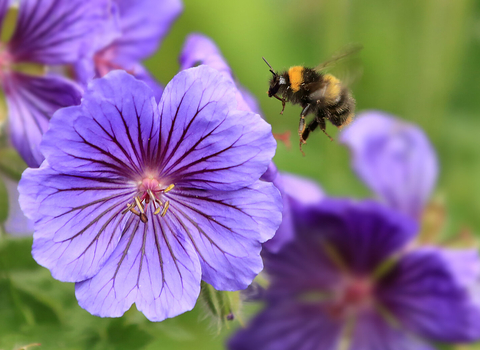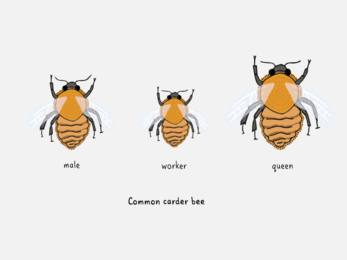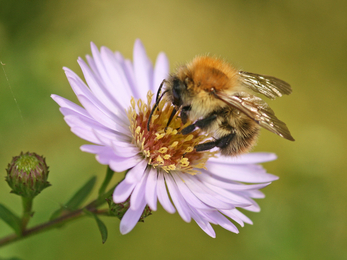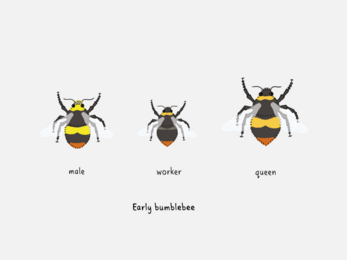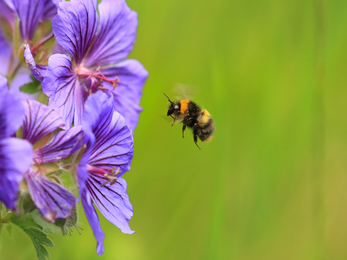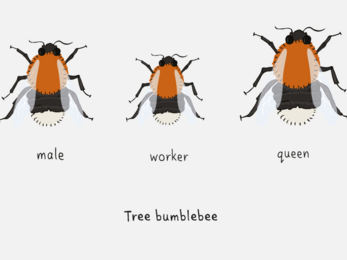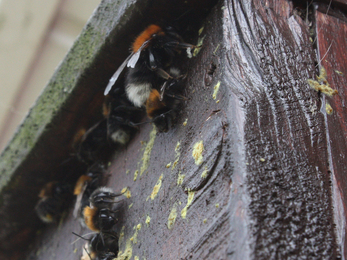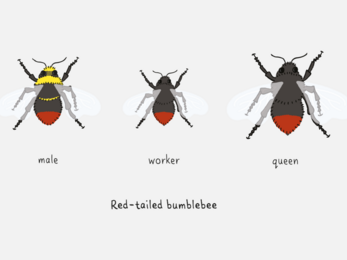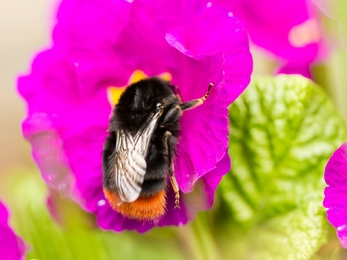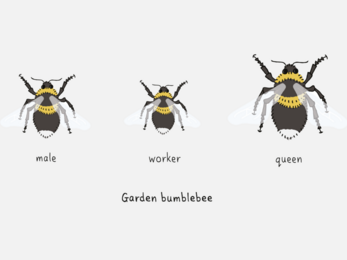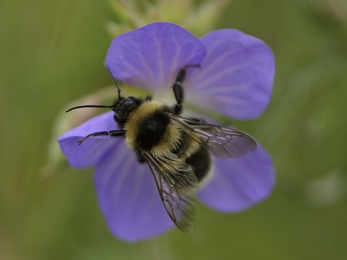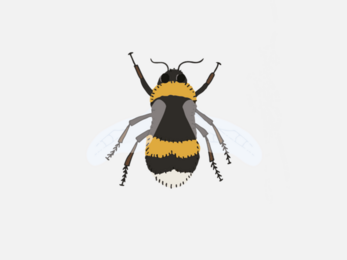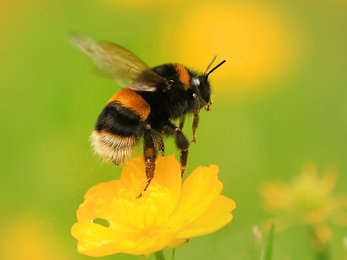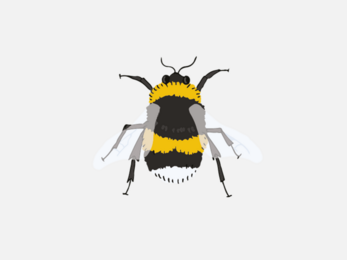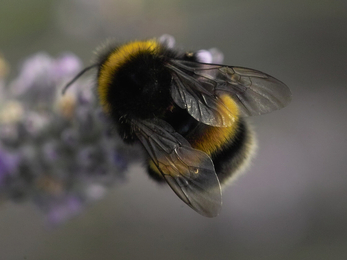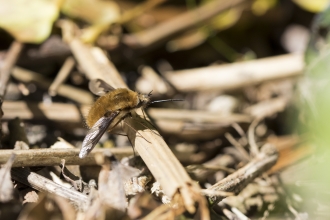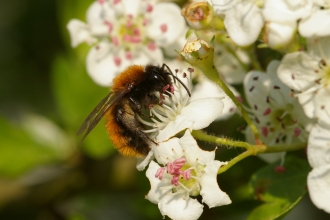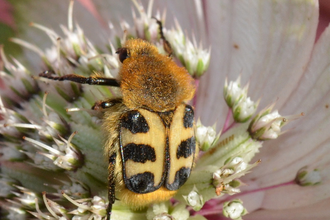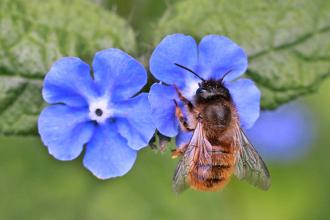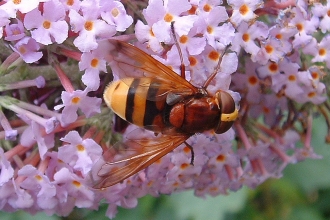What bee is this?
In Britain we have around 270 species of bee and of them, 24 are species of bumblebee. You can identify some of the common bumblebees you see buzzing around our parks and gardens using our guide.
Common carder bee
The common carder bee is a fluffy, brown-and-orange bumblebee, sometimes displaying darker bands on the abdomen. One of our most common bumblebees, the common carder bee emerges early in the spring and can be seen feeding on flowers right through to November.
Early bumblebee
The early bumblebee is relatively small, with distinctive lemon-yellow bands on its thorax and abdomen, and an orange tail. It is found throughout the UK in all kinds of habitats. It is a small bee and an important pollinator of soft fruit, such as raspberries and blackberries.
Tree bumblebee
The tree bumblebee has fuzzy, browny-orange hairs on its thorax, a black abdomen, and a white tail. It can now be found in much of England and Wales and has reached Southern Scotland. It is associated with open woodland, so is commonly found in gardens that have a similar type of habitat.
Red-tailed bumblebee
The female red-tailed bumblebee is a very large, black bumblebee with a big red 'tail' while males are smaller. It can be found in gardens, farmland, woodland edges, hedgerows and heathland - anywhere there are flowers to feed on.
Garden bumblebee
The garden bumblebee is a large, scruffy-looking bee, with a long tongue and face. It has yellow bands at the collar, rear of the thorax and at the first segment of the abdomen, and the tip of the tail is white. It is a relatively large a bumblebee and can be found in a variety of habitats from woodlands to gardens.
Buff-tailed bumblebee
The buff-tailed bumblebee has a yellow collar near the head and another on the abdomen. The queen has a buff-coloured 'tail', while the workers have white 'tails' with a faint buff line separating them from the rest of the abdomen. Males have buff-tinged tails and also have black hair on their faces. Buff-tailed bumblebees are the biggest of the bumblebees and are found in lowland areas.
White-tailed bumblebee
The white-tailed bumblebee is black with two lemon-yellow bands on its body and a white 'tail'. There are several very similar species that can be very difficult to tell apart. The buff-tailed bumblebee, for example, has black and dull yellow bands, and a buff-coloured tail, instead of a bright white one. White-tailed bumblebees are also similar to garden bumblebees who again have a white tail but the stripes are in a slightly different place. White-tailed bumblebees can be found in gardens, farmland, woodland edges, hedgerows and heathland - anywhere there are flowers to feed on.
It looks like a bumblebee...
As well as the common bumblebee species above, you might spot some others in your garden or local area that are in disguise! Insects like hoverflies can mimic bees to help deter predators, and cuckoo bumblebees use their disguise to gain access to nest sites.
There are also 250 species of solitary bee in the UK! Some of them have distinctive markings and can be differentiated from honeybees. Look for them in your garden or along field boundaries.

